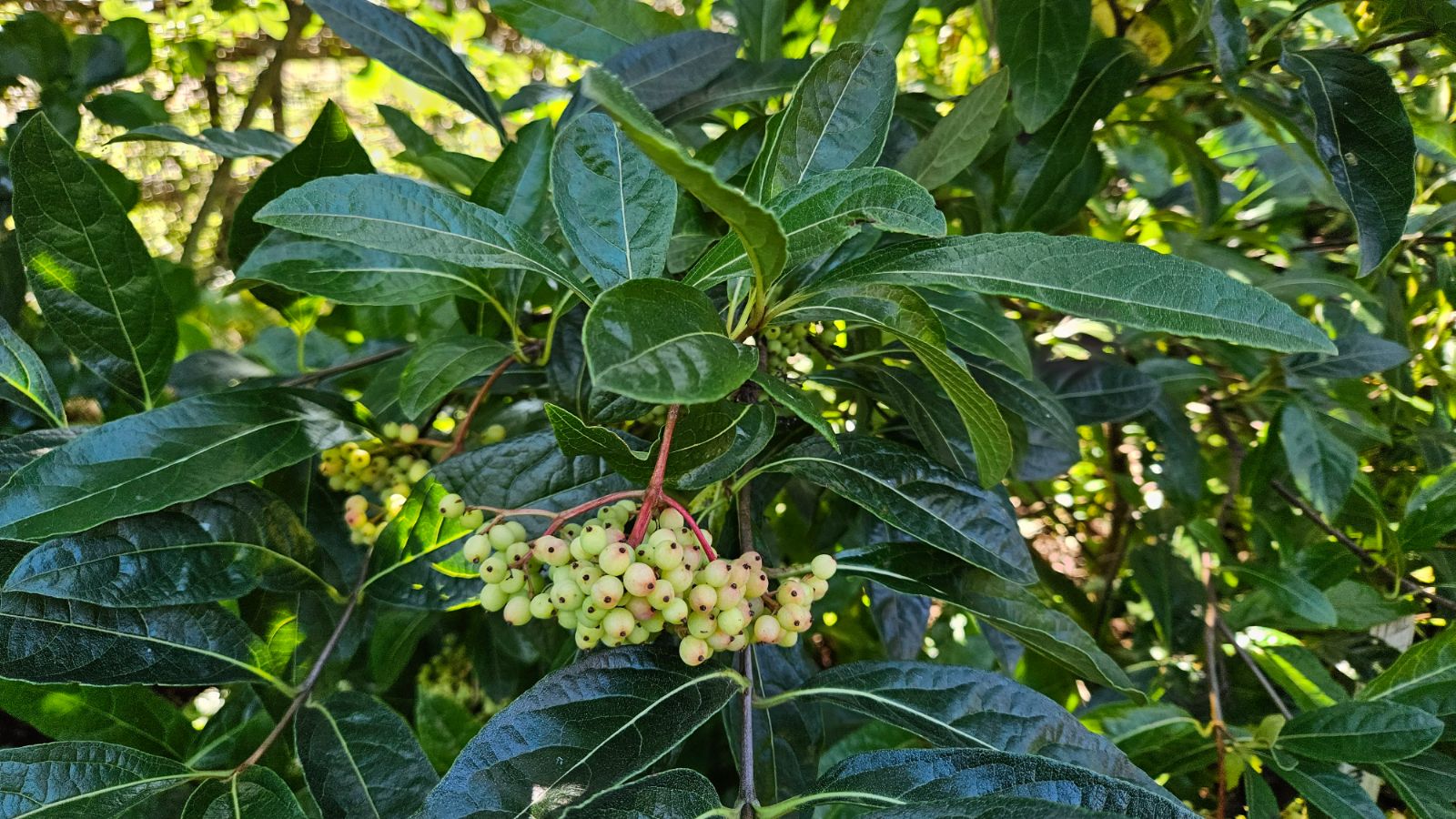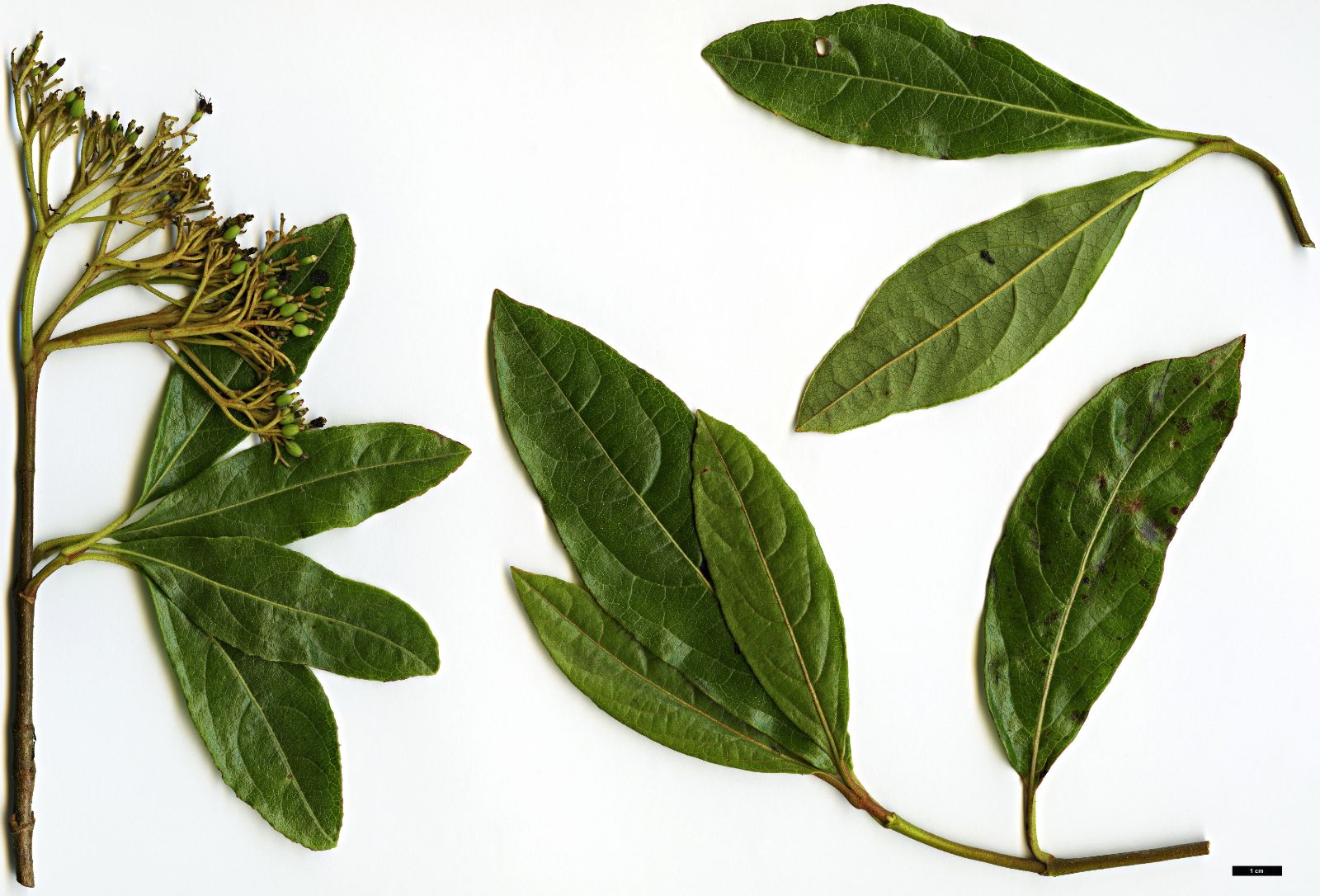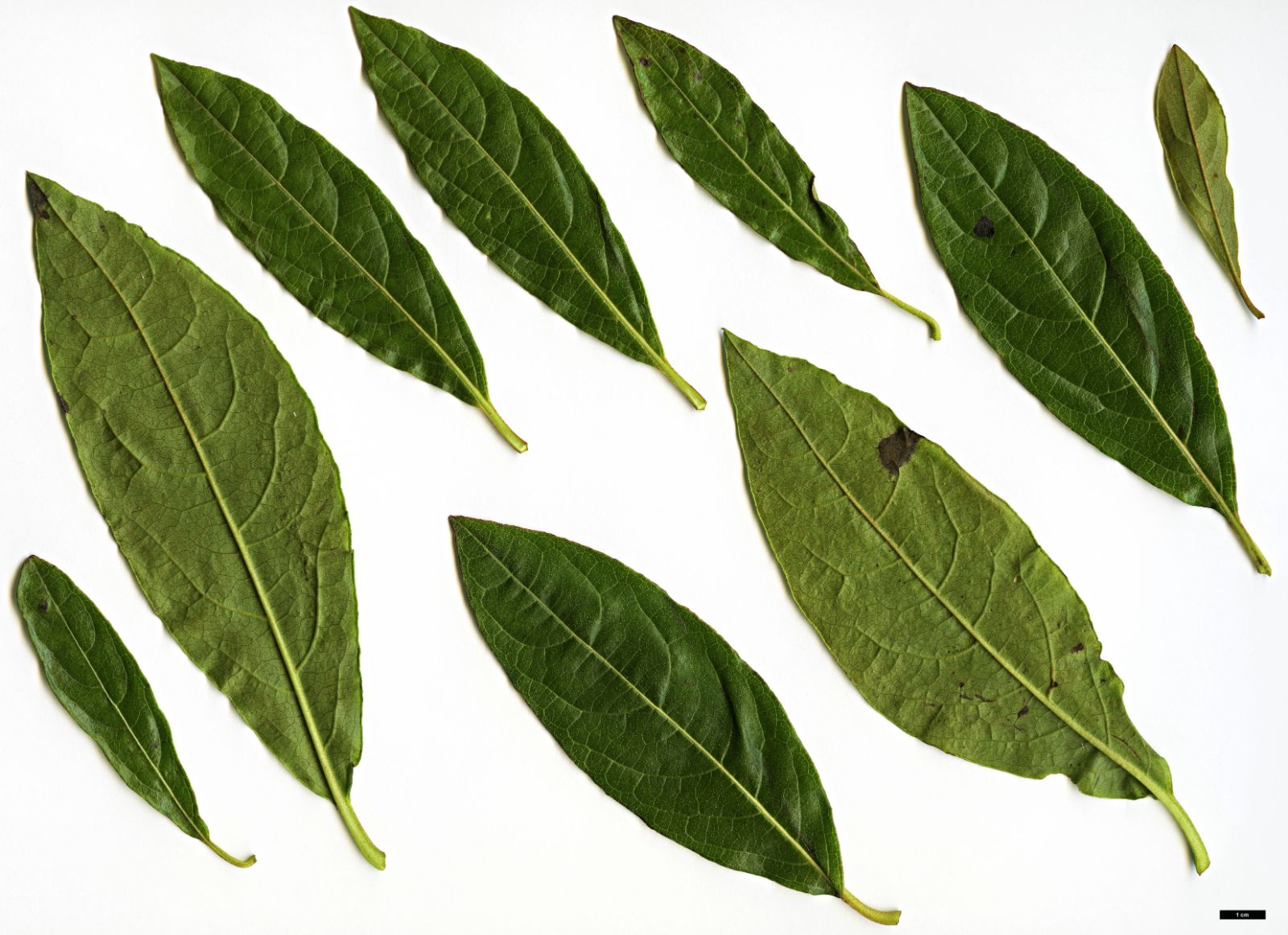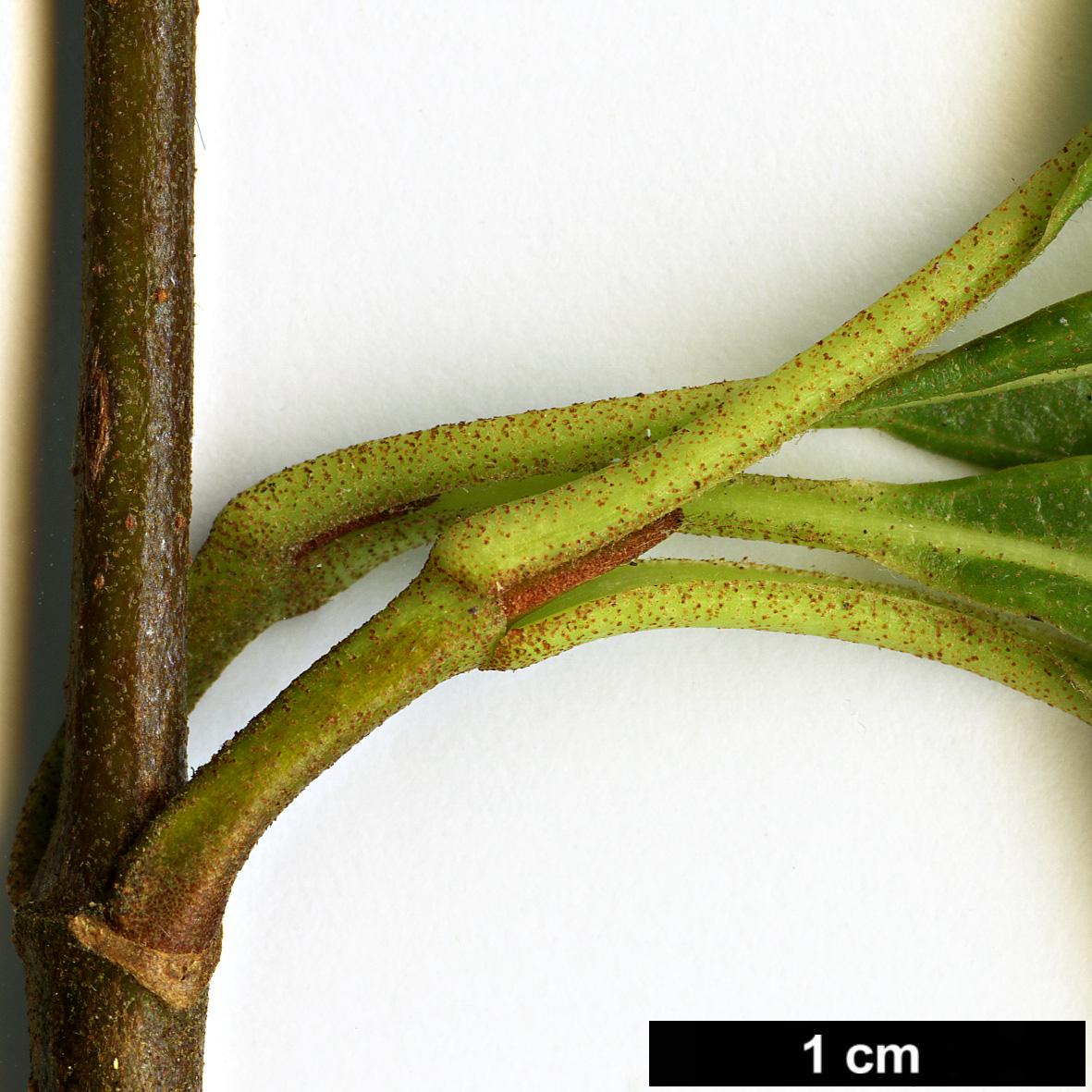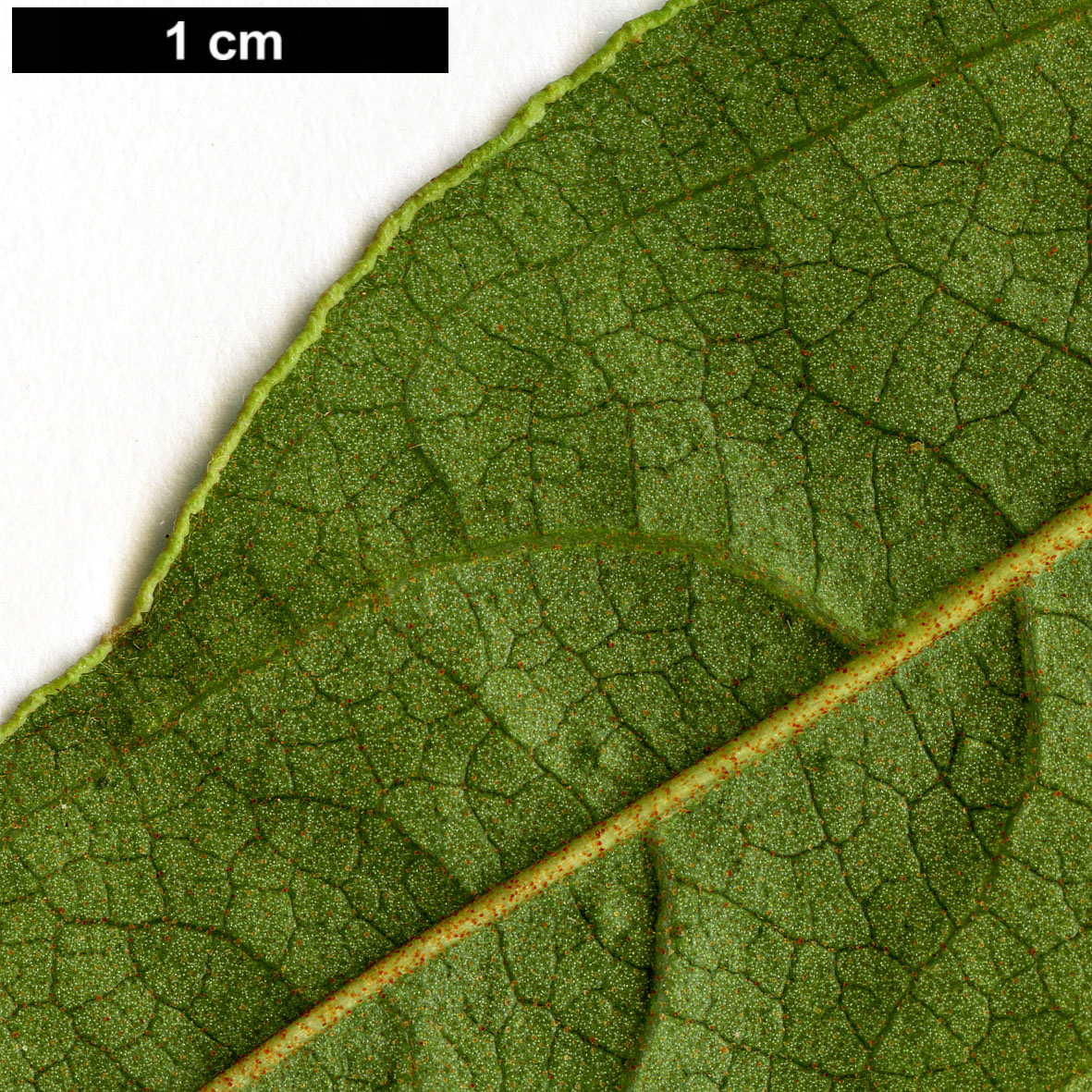Viburnum nudum
Credits
Article from Bean's Trees and Shrubs Hardy in the British Isles
Recommended citation
'Viburnum nudum' from the website Trees and Shrubs Online (treesandshrubsonline.
Genus
Other taxa in genus
- Viburnum acerifolium
- Viburnum betulifolium
- Viburnum × bodnantense
- Viburnum buddleifolium
- Viburnum burejaeticum
- Viburnum × burkwoodii
- Viburnum × carlcephalum
- Viburnum carlesii
- Viburnum cassinoides
- Viburnum cotinifolium
- Viburnum cylindricum
- Viburnum davidii
- Viburnum dentatum
- Viburnum dilatatum
- Viburnum erosum
- Viburnum farreri
- Viburnum foetidum
- Viburnum grandiflorum
- Viburnum harryanum
- Viburnum henryi
- Viburnum hupehense
- Viburnum japonicum
- Viburnum kansuense
- Viburnum lantana
- Viburnum lantanoides
- Viburnum lentago
- Viburnum macrocephalum
- Viburnum molle
- Viburnum odoratissimum
- Viburnum opulus
- Viburnum phlebotrichum
- Viburnum plicatum
- Viburnum propinquum
- Viburnum prunifolium
- Viburnum rhytidophyllum
- Viburnum rigidum
- Viburnum rufidulum
- Viburnum schensianum
- Viburnum setigerum
- Viburnum sieboldii
- Viburnum suspensum
- Viburnum tinus
- Viburnum utile
- Viburnum veitchii
- Viburnum wilsonii
- Viburnum wrightii
A deciduous shrub up to 10 ft high; young shoots slightly scurfy and downy. Leaves oval, ovate or lance-shaped, 2 to 41⁄2 in. long, 1 to 21⁄4 in. wide, minutely and irregularly toothed to almost entire, dark glossy green and glabrous above, paler, somewhat scurfy or glabrous beneath; stalk 1⁄4 to 5⁄8 in. long. Flowers yellowish white, uniform and perfect, 1⁄5 in. across, produced in early June on cymes 2 to 4 in. wide; the main-stalk as long or longer than the branched flowering portion. Fruits 1⁄3 in. long, oval, blue-black.
Native of eastern N. America; introduced in 1752. This viburnum is closely akin to V. cassinoides, under which species the distinctions between the two are explained. It is a handsome, shiny-leaved shrub which flowers freely. It has a more southern distribution than V. cassinoides, and does not, apparently, reach into Canada.

